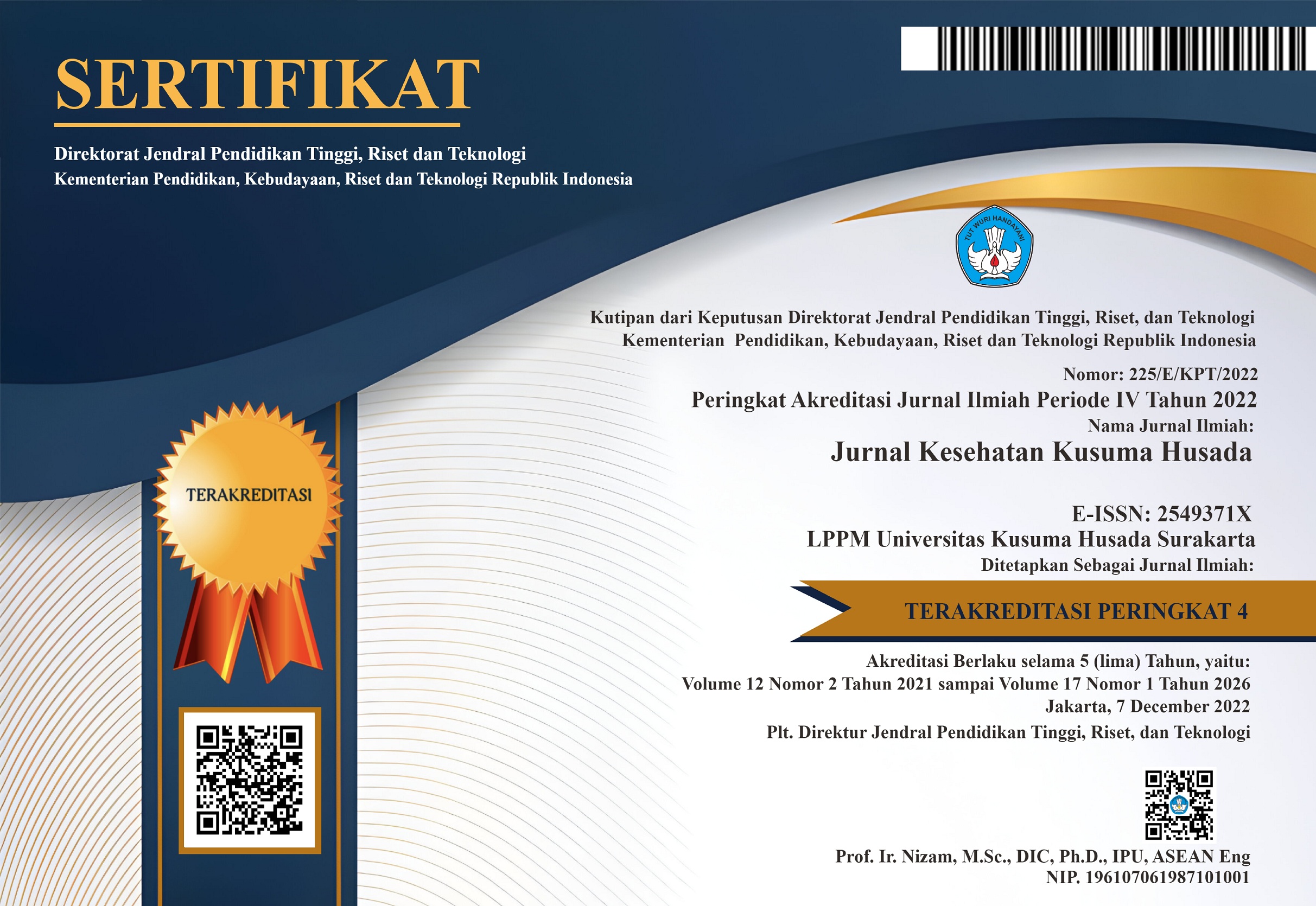STUDI AKTIVITAS HEPATOPROTEKTIF FRAKSI ETIL ASETAT KENIKIR (COSMOS CAUDATUS) PADA TIKUS YANG DIINDUKSI PARASETAMOL KAJIAN STRESS OSIDATIF (LIPID PEROSIDASE)
Abstract
ABSTRAK
Hati memainkan peran penting dalam metabolisme dan ekskresi. Parasetamol dosis tinggi dapat membuat gagal hati akut (ALF) dan nekrosis di hepar dari penanda enzim serta meningkatkan parameter oksidatif stres untuk peroksidasi lipid. Tujuan penelitian untuk mengetahui efektivitas etyl asetat fraksi kenikir pada tikus yang diinduksi oleh parasetamol. Desain penelitian aktivitas hepatoprotektif menggunakan hewan uji yang terbagi enam kelompok. Kelompok I (normal) diberi asupan aquades, kelompok II (kontrol negatif) diberi CMC 1 %, kelompok III (kontrol positif) diberi kurkuminoid 100mg/kg BB dalam CMC 1 %, kelompok IV-VI (kelompok perlakuan) diberi fraksi etil asetat kenikir dengan dosis 281,25 mg/kg BB, 562,5 mg/kg BB, dan 1.125 mg/kg BB. Perlakuan sediaan uji selama 7 hari, pada hari ke-7, 30 menit setelah pemberian sampel uji dilanjutkan dengan induksi parasetamol dosis 2,5 g/kg BB secara peroral. Setelah 48 jam induksi, selanjutnya dilakukan pembedahan hewan uji untuk pengambilan sampel liver. Sampel jaringan liver digunakan untuk analisis parameter stres oksidatif yaitu lipid peroxidation (LPO). Fraksi etil asetat kenikir dosis 1125 mg/kg BB mampu menghambat terjadinya lipid peroksidasi secara signifikan yaitu memberikan efek optimal hepatoprotektif dan indikasi penurunan peroksidasi lipid (p <0,05). Mekanisme hepatoprotektor fraksi etil asetat kenikir didasarkan atas kemampuan sebagai antioksidan (in vitro dan in vivo) sehingga terjadinya kerusakan liver (nekrosis) dapat diminimalisir.
Kata kunci: etylaccetate kenikir fraksi, hepatoprotektif, peroksidasi lipid, parasetamol
ABSTRACT
The liver plays an important role in the metabolism and excretion. High doses of paracetamol could create acute liver failure (ALF) to show necrosis at high liverby of marker enzymes and increases oxidative stress parameters for example lipid peroxidation. The aim of research to determine the effectiveness etyl acetate fraction of marigolds in rats induced by paractamol. The study design hepatoprotective activity using test animals were divided into six groups. Group I (normal) fed a diet of distilled water, group II (negative control) were given CMC 1%, group III (positive control) were given kurkuminoid 100mg / kg in CMC 1%, group IV-VI (the treatment group) were given a fraction of ethyl acetate kenikir with a dose of 281.25 mg / kg, 562.5 mg / kg, and 1,125 mg / kg. Test preparation treatment for 7 days, on the 7th day, 30 minutes after administration of the test sample followed by induction of paracetamol dose of 2.5 g / kg is orally. After 48 hours of induction, then performed surgery for sampling test animal liver. Liver tissue samples used for the analysis of oxidative stress parameters, namely lipid peroxidation (LPO). Ethyl acetate fraction kenikir dose 1125 mg / kg is capable of preventing the occurrence of lipid peroxidation significantly optimal effect hepatoprotective indicated by a decrease lipid peroxidation (p<0.05). Hepatoprotective mechanism kenikir ethyl acetate fraction is based on the ability of antioxidants (in vitro and in vivo) so that the occurrence of liver damage (necrosis) can be minimized.
Keywords: etylaccetate fractions of kenikir, hepatoprotective, lipid peroxidation, paracetamol
References
Downloads
Issue
Section
License
The copyright of the published articles belongs to Jurnal Kesehatan Kusuma Husada.

This work is licensed under a Creative Commons Attribution 4.0 International License.
















